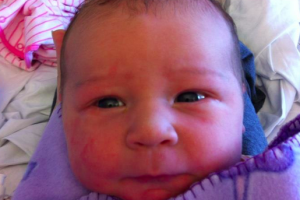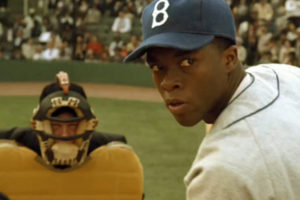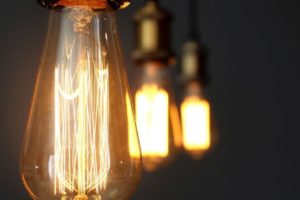The NBA’s announcement this past Saturday that they had reached an agreement with the players on a new collective bargaining agreement (CBA) was reason for rejoicing among basketball fans everywhere (my apologies to college basketball enthusiasts, but the NBA is simply a far superior product). But while the real fun doesn’t begin till Christmas day when the season starts, it seems like a good time to reflect on what we learned during the lockout. Hopefully a little exercise in worldview analysis will enable us NBA fans to reflect back on the lockout with less distain.
The lockout began July 1, immediately following the expiration of the previous CBA between the owners and the players union. (In labor negotiations, ownership can lockout the members of a union they employ, meaning that they can’t work for them and thus, won’t collect a paycheck. It’s similar to a strike, only it’s initiated by ownership rather than the union.) The announcement of the lockout came as no surprise to anyone who followed the NBA as the owners had made it clear they felt they had to do so in order to gain significant concessions from the players during the next CBA. From the perspective of the owners, they would lose less money by forfeiting part or all of the upcoming season than if they played it under the just-expired CPA. According to them, they had been losing money on an annual basis over the course of the previous agreement, with losses topping $300 million during this past season alone (These losses are on a collective basis which includes all teams. Certain teams, like the Lakers and Knicks, were quite profitable, but the majority of teams were not, and the NBA overall was not.). During that agreement, basketball related income (BRI) had been split 57/43 with the players getting the larger slice of the pie. The first goal on the agenda of the owners, led by commissioner David Stern was to bring that split closer to 50/50, hopefully ensuring that a given team, if ran properly, could be profitable.
A second major goal was to create more competitive balance. While the league did have a “soft” salary cap in place, teams were allowed (through a number of different channels) to surpass the cap and pay a dollar-for-dollar “luxury tax” on the amount by which they surpassed the cap. Teams like the Lakers with TV contracts approaching $100 million annually are virtually ensured of making a profit and thus, the luxury tax was no deterrent whatsoever from spending on the best basketball talent. Meanwhile, the teams in smaller markets with TV contracts worth tens of millions less could not afford to go over the luxury tax threshold without incurring major financial losses and therefore could not compete for the same basketball talent the wealthier teams could. In addition to financial constraints, many of league’s best players desired to play in the biggest or most glamorous markets (LA, Miami, New York, etc.) and held the threat of leaving their current smaller market teams with nothing in return when they hit free agency. Due to a provision in the previous CBA, a player’s current team could offer him more money over the life of a contract than that player could receive on the open market from a new team. This was supposed to give the teams that drafted the top talent an advantage when it came to retaining those players when their contracts expired. Instead, many of these players used the threat of leaving, and their current team getting nothing in return, over that team’s head in an attempt to get that team to agree to sign them to the maximum contract allowed and then trade them to the team they desired to play for. This effectively rendered the provision impotent to do what it was designed to do. Large market teams with deeper pockets and a more appealing culture or location had a very real competitive advantage. The owners hoped to even the playing field.
With this background in mind, what did we learn as the NBA lockout played out? On initial review, there seems to be little for the Christian to take away from this whole process. After all, if we’re discussing basketball, we already know Paul said, “physical training is of some value” (not much!) (1 Timothy 4:8a), and we’re not even talking about actually playing basketball here. Paul didn’t give us any instructions on how to split basketball related income. However, I think there were a few takeaways for the critical observer.
1. The NBA lockout served as something of a litmus test for one’s political views. This was apparent from the coverage in the news and on Twitter from those following the story. If one sided with the players and was critical of the owners, decrying their greed and selfishness, that person likely leaned to the left politically. If one leaned more to the right, they likely saw the merit in the owners’ position and hoped the players would “be reasonable” so that the lockout could end. Of the members of the media whose political views I’m familiar with and friends of whom I know the same, more often than not this was the case. Nothing happens in a vacuum, and while there is often no rational basis for the sports teams we root for, when it came to collective bargaining, the political and economic philosophies of those following along came to the surface. It was interesting to read or hear the various opinions floating around and make the connections to the worldviews of their sources. Now of course, the issue is more nuanced than labor versus management, and not all participants conformed to their political stereotypes, but frequently it seemed possible to connect the dots.
2. The knee-jerk reaction of some to the notion of competitive balance that the owners sought was that this sounds like socialism. In fact, the NFL which employs a hard salary cap without the exceptions the NBA has in place has been accused of being socialist. The “capitalism” on display in Major League Baseball is the most desirable system, they would argue (the system that allows the Yankees to put the best team money can buy on the field each year). While there may be some similarities to the governing system of socialism (specifically the redistribution of wealth), it’s a misnomer to use this term. There is no collective ownership or government in place that controls the means of production and distribution. NBA teams are free to earn as much money as they can. A portion of this is set aside for the players union, and unless they go over the luxury tax threshold, once they’ve paid their other expenses, the rest is theirs to keep. I will concede that there is an interesting debate to be had here in economic philosophy with regards to whether there ought to be revenue sharing at all (or at least, how much revenue sharing should there be?). Perhaps this discussion should be our third take away from the lockout. But accusing Commissioner Stern or the NBA of socialism is simply not accurate.
3. The economic theory discussion spurned on by the NBA’s efforts to even the playing field for small market teams. Such an exercise in critical thinking could be quite profitable and wouldn’t have been possible if not for the collective bargaining process.
4. It was fitting that the lockout ended on Thanksgiving weekend. In a worldwide political and economic environment in which there is much unrest, even violence in some countries, we ought to be thankful that we live in a nation in which the differences between labor and management can be handled in a peaceful negotiation process. Some are cynical about the collective bargaining process, calling it an argument “between millionaires and billionaires.” While it certainly is true that how revenue is split between two groups of extremely wealthy individuals is an insignificant matter in the big scheme of things, the fact that labor negotiations are one of the most contentious events making headlines in the United States and not terrorist attacks is something to be grateful for.
I hope the NBA lockout can be redeemed, at least in part, by our thinking critically about the situation. Watching basketball is a lot more fun than reading about collective bargaining negotiations, but if it was able to prevent us from lying comatose on the couch with our brains in neutral watching a meaningless November game, and instead got us to engage in worldview analysis and economic theory discussions, perhaps we’ll have benefited from the process. Now we can be thankful that the sport we love is back. The NBA: Where basketball (finally) happens.





4 Comments
Leave your reply.